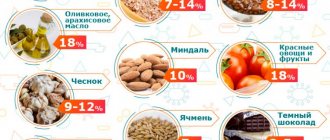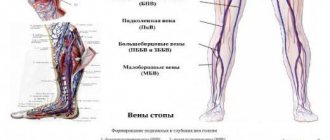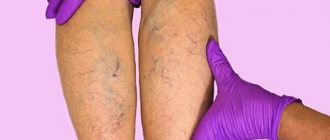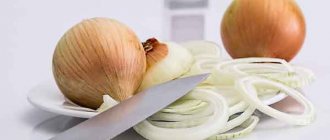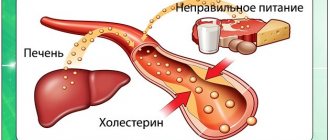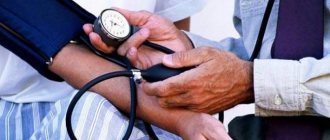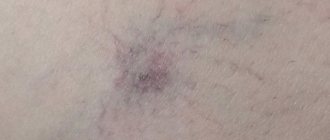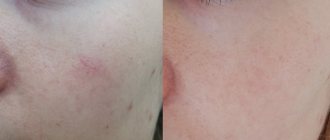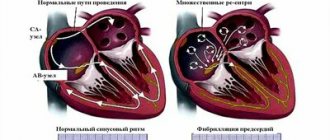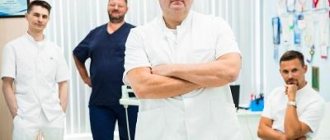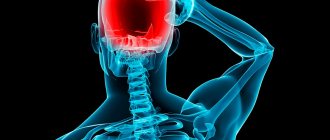There are many blood vessels in the human body. Their main task is to deliver oxygen and nutritional components to tissues and organs. There are blood vessels throughout the body - from the top of the head to the tips of the toes. Most often, disorders occur in the lower extremities.
This is due to the fact that it is the legs that bear the constant load when moving and standing for long periods of time. Varicose veins are a common disease. Phlebologists point out that the disease is “getting younger” every year, which is associated with the lifestyle of modern people.
Initially, varicose veins manifest as a cosmetic defect - spider veins appear on the skin of the legs. If treatment is not started during this period, the disease progresses - protruding bluish veins appear on the legs, swelling, pain, constant heaviness and discomfort are observed. Varicose veins often lead to the formation of blood clots.
The genetic factor plays a significant role in the development of the disease. If you have a family history of varicose veins, your legs need to be closely monitored. So, how to strengthen the veins and blood vessels in the legs, what foods, pills and exercises will help with this - we will consider further.
What's in this article:
How to strengthen veins in the legs?
To effectively and long-term strengthen the blood vessels of the legs, an integrated approach is important. It includes physical activity, nutritional correction, taking vitamins and minerals, and the use of venotonics (for example, Normaven® products).
Exercises to strengthen blood vessels in the legs
What does modern prevention of varicose veins of the lower extremities include:
- Physiologically sufficient physical activity. Hiking, swimming, cycling are useful. With these types of loads, the calf muscle is activated, which maintains the necessary tone of the venous system of the lower extremities.
- Proper, balanced nutrition. The required amount of proteins, fats, carbohydrates, vitamins and microelements must be supplied to the body daily.
- The use of compression hosiery under excessive and static loads, as well as air travel.
- A preventive visit to a phlebologist to monitor the condition of the venous system.
By following these simple rules you can keep your legs healthy and beautiful for a long time.
Self-medication and prevention of varicose veins are two different things!
Various ointments, creams, as well as baths with herbal decoctions can provide some pleasure, but cannot prevent the development of varicose veins. All these effects are not effective prevention of varicose veins of the legs (lower limbs). Do not think that preventing varicose veins can completely prevent the development of the disease. There is nothing absolute in this world. However, prevention of varicose veins can give many years of life without symptoms of the disease.
Exercises to strengthen blood vessels in the legs
Moderate physical activity is extremely important to maintain the health of the walls of large and small vessels. Walking, swimming, yoga, Pilates, stretching, exercise therapy - all these are effective methods for preventing the development of varicose veins and improving the condition when the first signs of a problem appear.
Expert opinion
The choice of the type and intensity of physical activity should be made taking into account the condition of the patient’s veins, the presence of concomitant pathologies, his age, gender and level of physical fitness.
Vascular surgeon, phlebologist
Osipova Ekaterina Yakovlevna
Strengthening the veins and vessels of the legs using the Bubnovsky method
The Bubnovsky method of treating varicose veins has its own characteristics. There are also certain rules that must be followed. A gymnastic complex, specially developed by the doctor, helps blood move normally through the vessels.
In the first days of classes, you should not put too much stress on the body, run or walk long distances, as this can lead to aggravation of the clinical picture. Training for varicose veins involves various rotational and flexion movements. According to the doctor, the best exercises are “scissors” and “bicycle”.
To improve the effect of exercise, you should wear compression garments before exercise. It prevents complications and improves blood circulation. During training, you need to monitor your breathing.
Physical education for varicose veins according to Bubnovsky includes the following exercises:
- You can’t sit on a chair, you can’t lean your back against the back. Raise your foot (toes only), then shift your support to your heel. Repeat 15 times for each limb.
- Stand straight. Then move to your toes, then to your heels. Repeat 10-15 times. This exercise for the blood vessels of the legs should be done at a slow pace.
- Place your hands on the wall. Stand on your toes. Inhale deeply and return to the starting position, lower your arms along your body. Repeat 10 times or more.
- Sit on a chair, lift your legs one by one, straightening your knees. When lifting your leg, you need to rotate your foot 360 degrees. This activity helps to “disperse” blood stagnation.
After completing a set of exercises, you need to lie on the floor and raise both limbs, resting them on the wall. This will allow your legs to completely relax. Lie in this position for 3-5 minutes.
Latest information: Magnetic therapy: indications and contraindications for varicose veins
Medications to strengthen blood vessels in the legs
To maintain optimal hemodynamic properties of the blood, improve the elasticity of the walls of blood vessels and normalize their lumen, patients are prescribed anticoagulants, vasodilators (in the presence of spasms), nootropics, NSAIDs, and means to maintain optimal pressure.
Medicinal methods of strengthening blood vessels
!
Prescribing medications to thin the blood and increase the tone of the vascular walls should be done exclusively by a phlebologist. Self-medication (especially with the use of anticoagulants) can be harmful to health!
What is the prevention of varicose veins of the legs (lower limbs)
Prevention of varicose veins of the legs (lower limbs) allows you to avoid the early development of symptoms of chronic venous insufficiency and live a full life. Many people would like to avoid developing vein pathology. Despite this, few people are involved in the prevention of varicose veins. Modern statistics and observations of professionals show that even those patients who do not have a hereditary factor are susceptible to varicose veins. Therefore, it is necessary to begin the prevention of varicose veins of the lower extremities long before the first symptoms of venous insufficiency appear.
Prevention of varicose veins of the legs
It goes without saying that if chronic severity, evening swelling of the lower extremities, or visible dilation of the veins appears, it is necessary to contact a specialist in the treatment of veins, a phlebologist.
What to drink to strengthen blood vessels in the legs: vitamins and plant decoctions
Vitamins can be taken both in mono form and as part of vitamin-mineral complexes. The most valuable vitamins for veins and capillaries are C, B, E, A, E and rutin.
As for traditional methods, they can be used at the initial stage of development of vascular fragility or used as an additional measure during drug treatment (only with the permission of a doctor).
Healthy eating rules to strengthen blood vessels in the legs
Vitamin for veins
09.08.2019
"Troxerutin-MIC" - vitamin for veins
VITAMIN FOR VEINS
Based on materials from the magazine Aptekar
In the initial stages, varicose veins are of little concern to patients. However, the presence of spider veins and dilated veins can cause not only poor health in the future, but also lead to the development of thrombophlebitis, thrombosis and thromboembolism, which pose a real threat to health. Therefore, everyone who notices the first signs of the disease must follow certain preventive measures.
Where does the heaviness in my legs come from?
Chronic venous insufficiency (CVI)
is a condition caused by a violation of the venous outflow from the lower extremities associated with insufficiency of the superficial and deep veins.
With CVI, the venous valves are damaged, which causes blood to be retained in the vessels, pressure increases, blood flow slows down, and fluid accumulates in the tissues. As a result, the walls of the veins are stretched and their tone is lost. To reduce pressure in the blood vessels, fluid is released into the tissues, resulting in swelling of the legs. They usually occur towards the end of the day, more often during prolonged periods of sitting or standing. Externally, varicose veins first appear as small vascular “stars”, then the veins begin to show through the skin, then they become lumpy, and complaints of pain, swelling and night cramps arise. The feeling of heaviness and heat in the legs becomes constant. Vein diseases are not at all uncommon. They occur in more than half of the adult working population. Women suffer from varicose veins much more often. They account for 60–70% of all cases of CVI. The risk group also includes:
- lovers of high heels; athletes whose training involves a lot of stress on their legs (tennis, weightlifting, bodybuilding); representatives of “sedentary” professions and professions that require standing on their feet for a long time (drivers, computer scientists, doctors, hairdressers, salesmen, teachers , waiters);
- overweight people;
- people who abuse coffee and/or alcohol (these products dehydrate the body and lead to blood thickening);
- those who have a hereditary predisposition to vascular weakness.
If a visitor appears at the pharmacy who is concerned about the expansion of veins due to varicose veins, then he will undoubtedly be glad to know how to get rid of swelling and heaviness in the legs.
What to do to strengthen blood vessels
Traditionally, the treatment of CVI is the responsibility of surgeons. However, surgery as an independent method of treatment is applicable in no more than 10% of patients. If a person has initial signs of varicose veins, regular adherence to simple rules can slow down, and in some cases prevent, its further development. In this case, it is necessary to take angioprotectors (usually 2 times a year - in winter and summer), wear compression garments and visit a phlebologist annually for an ultrasound Doppler scan.
Recommendations for CVI:
- Water treatments (swimming, contrast shower, pouring cold water on your feet). They significantly improve your well-being and relieve heaviness in your legs. On the contrary, it is better to abstain from hot baths, saunas and prolonged exposure to the sun. They reduce venous tone, which leads to blood stagnation.
- More movement! It is necessary to alternate loads during the working day so as not to remain in the same position for a long time. Regular moderate exercise is also recommended. Aerobics, running, and swimming are useful. They help strengthen veins and improve blood circulation. Heavy exercise such as powerlifting or bodybuilding should be avoided. They contribute to the progression of the disease.
- Weight under control! Overweight people are more susceptible to developing varicose veins because their blood vessels are under increased strain.
- Loose clothing and compression hosiery help prevent varicose veins to some extent. And tight outfits, stockings and socks with tight elastic bands lead to compression of the veins and deterioration of well-being. Tight shoes and high-heeled shoes - away!
- Exercise therapy morning and evening. Simple exercises are recommended to improve blood circulation - alternately bending and straightening the toes, rotating the feet in and out, and doing a “bicycle” exercise for 5 minutes.
- Taking a drug that reduces capillary permeability, containing troxerutin, to reduce pain, swelling, heaviness in the legs and prevent trophic disorders.
Away from varicose veins
In pharmacies there is a medicine produced by Minskintercaps Unitary Enterprise
, containing troxerutin -
Troxerutin-MIC
in capsules of 200 mg and 300 mg, the raw materials for which are purchased in the Czech Republic.
Troxerutin-MIC
is a flavonoid with P-vitamin activity, which reduces the permeability and fragility of capillaries, has a venotonic, angioprotective, anti-inflammatory and decongestant effect.
Troxerutin-MIC
also has antioxidant activity.
It prevents damage to endothelial cell membranes, reduces exudative inflammation in the vascular wall, reduces platelet adhesion to its surface, and inhibits erythrocyte aggregation. Regular use of Troxerutin-MIC
for CVI reduces the feeling of heaviness and swelling in the legs, reduces the intensity of pain and cramps, and improves tissue trophism.
For patients with CVI Troxerutin-MIC
It is recommended both in the initial and late stages of the disease as part of complex treatment or as monotherapy. The effectiveness of troxerutin has been tested by time. The drug is included in the List of Essential Medicines approved by the Ministry of Health of the Republic of Belarus.
In pharmacies there is a medicine produced by Minskintercaps Unitary Enterprise
, containing troxerutin -
Troxerutin-MIC
in capsules of 200 mg and 300 mg, the raw materials for which are purchased in the Czech Republic.
The initial dose is 1 capsule 2-3 times a day. Treatment is continued until there is noticeable improvement (reduction of swelling and other symptoms of CVI), usually within 2 weeks. Next, maintenance therapy is prescribed - 2 capsules per day for 2-4 weeks. Troxerutin-MIC
is taken orally during meals. Courses can be repeated as needed. Timely treatment can significantly reduce the likelihood of developing complications of CVI.
